Address: The Nunnery, Thetford, Norfolk IP24 2PU.
Director: Dr Jeremy Greenwood.

Butterfly Conservation
Although we have so few species compared with most other European countries, butterflies are next to birds in popularity. In 1968 the British Butterfly Conservation Society (BBCS) was formed by Thomas Frankland and Julian Gibbs with the purpose of saving rare species from extinction and promoting research and public interest in butterflies. Growth was slow at first, but the Society took on the responsibility for the Butterfly Monitoring Scheme in 1983, and acquired its first nature reserve three years later. Since shortening its name to ‘Butterfly Conservation’ in 1990, the society has acquired considerable in-house expertise. With 10,000 members, it is said to be the largest conservation body devoted to insects in all Europe.
With an office in Dorset, probably today’s richest county for butterflies, Butterfly Conservation has a network of 31 branches throughout Britain and runs 25 nature reserves. It has also opened an office in Scotland. It is funded mainly by grants, corporate sponsorship and legacies. The Society’s most substantial achievement to date is its ‘Butterflies for the New Millennium’ project, a comprehensive survey of British butterflies involving thousands of recorders in Britain and Ireland, culminating in the publication of a Millennium Atlas in 2001 (Asher et al . 2001). Butterfly Conservation is the lead partner for several Species Action Plans, and administers some 30 other projects under its ‘Action for Butterflies’ banner. The Society also helps to monitor butterfly numbers using fixed transects (‘ every butterfly counts, so please count every butterfly’ ), and contributes to butterfly conservation internationally; Martin Warren, its conservation director, co-authored the European Red Data Book. The Society publishes a quarterly magazine, Butterfly Conservation , and a range of booklets. In 1997, it helped to launch a new Journal of Insect Conservation . Aim: ‘ Working to restore a balanced countryside, rich in butterflies, moths and other wildlife ’.
Address: Manor Yard, East Lulworth, Wareham, Dorset BH20 5QP.
Chairman: Stephen Jeffcoate. Head of Conservation: Dr Martin Warren.
The Farming and Wildlife Advisory Group (FWAG)
FWAG was the brainchild of an informal gathering of farmers and ecologists at Silsoe College, Bedfordshire, in 1969 to work out how to fit conservation into a busy, modern farm. (For a full account see Moore 1987.) Under the auspices of FWAG a network of local farm advisers was established, generally of youngish people with a degree in ecology but with a background in, or at least knowledge of farming. By 1984, some 30 advisers had been appointed, and a Farming and Wildlife Trust was launched to fund the local FWAGs, supported by grants from the Countryside Commissions and other bodies, as well as by appeals. The FWAG idea has helped to break down stereotypes and change farming attitudes. Its advisers became skilled at spotting ingenious ways of preserving wild corners, and planting copses and hedges without harming the farmer’s pocket. A notable achievement was the creation or restoration of thousands of farm ponds. An external review indicated that FWAG is strongly supported by farmers, with a high rate of take-up of advice.
Some saw the FWAG project as essentially a public relations exercise, and criticised it for being too much under the thumb of the National Farmers’ Union and hence reluctant to criticise modern farming methods. However, it has undoubtedly helped to find a little more space for wildlife on innumerable farms – up to 100 farms per county per year – and has built bridges with the farming community by organising farm walks and training visits, and appearing at the agricultural shows.
Head office: The National Agricultural Centre, Stoneleigh, Kenilworth, Warwickshire CV8 2RX.
Marine Conservation Society
Formed in 1978 (‘Underwater Conservation Year’), this small but active national charity with 4,000 members is dedicated to protecting the marine environment and its wildlife, especially in the offshore waters of the British Isles. It publishes an annual Good Beach Guide , an Action Guide to marine conservation and a ‘species directory’ of all 16,000 species of flora and fauna found in British waters. It campaigned successfully for protection for the basking shark, and is the ‘lead partner’ for the UK marine turtles Species Action Plan. Among its multifarious activities for volunteer divers and beachcombers are ‘Seasearch’, a project to map UK marine habitats, a schools project called ‘Oceanwatch’, and an adopt-a-beach project for communal cleaning up. Another project, ‘Ocean Vigil’, records cetaceans and sharks. Fund raising is called ‘Splash for Cash’. Internationally, the Society surveys coral reefs in the Red Sea and Sri Lanka, and is helping the Malaysian government to establish a marine wildlife park at the Semporna Islands. Members receive a quarterly news magazine, Marine Conservation . Its slogan: ‘ Seas fit for life ’.
Office: 9 Gloucester Road, Ross-on-Wye, Herefordshire HR9 5BU.

Plantlife
‘Britain’s only national membership charity dedicated to saving wild plants’ was established in 1989, and now has some 12,000 members and a permanent staff of 18, based in London. Plantlife aims to achieve for plants what the RSPB has done for birds, that is, to improve their lot through a programme of campaigning, practical conservation work and public education. As a small charity with big ideas, it often works in tandem with bodies with similar aims, for example, as a member of the campaign to save peatlands, and has formal links with botanical societies and institutions nationally and internationally. Under its ‘Back from the Brink’ campaign, Plantlife is the ‘lead partner’ for Species Action Plans on a range of rare flowers, bryophytes and fungi. It also runs 22 nature reserves across 17 counties, mainly meadows, heaths and bogs with an outstanding flora. It contributes to plant conservation Europe-wide via the newly founded Planta Europa network, and commissions research reports on matters of current concern, such as bulb theft, controlling the sale of invasive plants (‘At war with aliens’) and managing woods for wild plants (‘Flowers of the forest’). Its magazine, Plantlife , was recently voted the pick of the bunch. Its goal: ‘ A world in which the riches of our wild plant inheritance are not diminished by human activity or indifference but are recognised, cherished and enhanced ’.
Address: 21 Elizabeth Street, London SW1W 9RP.
Director: Dr Jane Smart.
Plantlife ‘flora guardians’ clearing invasive ‘parrot’s feather’ weed from a plant-rich waterway. (Tim Wilkins/ Plantlife)
Wildfowl and Wetlands Trust (WWT)
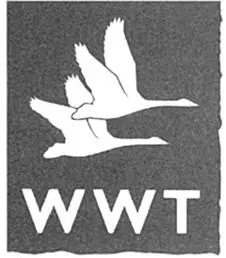
WWT is ‘the only charity concerned solely with wildfowl and the wetland habitats they rely on’. In 1946, Peter Scott leased 7 hectares of land at Slimbridge, Gloucestershire to establish the Severn Wildfowl Trust, renamed the Wildfowl Trust in 1954. Slimbridge has become home to the most comprehensive collection of ducks, geese and swans in the world. The Trust originally specialised in breeding endangered species, most famously the Nene or Hawaiian Goose, and Slimbridge later became a major research and ‘discovery’ centre. Nine more autonomous ‘Centres’ were established at Peakirk, Walney, Arundel, Martin Mere and Washington in England, Caerlaverock in Scotland, Llanelli in Wales and Castle Espie in Northern Ireland, all but the first being designed as refuges for wild birds (with excellent viewing facilities) rather than as captive breeding centres. The Trust also helped Thames Water to set up the Wetland Centre, on the site of Barn Elms Reservoir in London. It organises wildfowl surveys and advises on conservation worldwide, for example, on the design of a new wetland reserve in Singapore and on reed-bed filtration systems in Hong Kong. It changed its name in 1989 to reflect the Trust’s wider interest in wetland habitats. In 1992, WWT produced a global review on the conservation and management of wildfowl, and played a leading role on the first international conference devoted to these birds. Today it has some 70,000 members, while up to 750,000 people visit its Centres each year. Its newsletter is called The Egg . There is also a biannual research newsletter, Wetland News .
Читать дальше
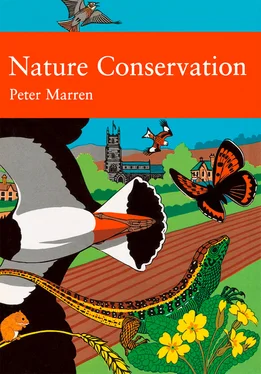




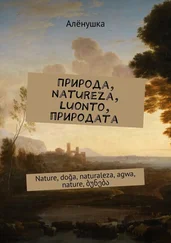

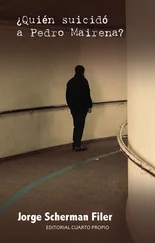
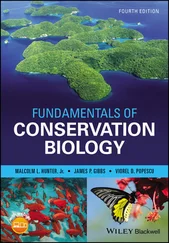





![Various - Birds and Nature, Vol. 12 No. 5 [December 1902]](/books/745517/various-birds-and-nature-vol-12-no-5-december-thumb.webp)
![Various - Birds and Nature Vol. 11 No. 2 [February 1902]](/books/745533/various-birds-and-nature-vol-11-no-2-february-1-thumb.webp)